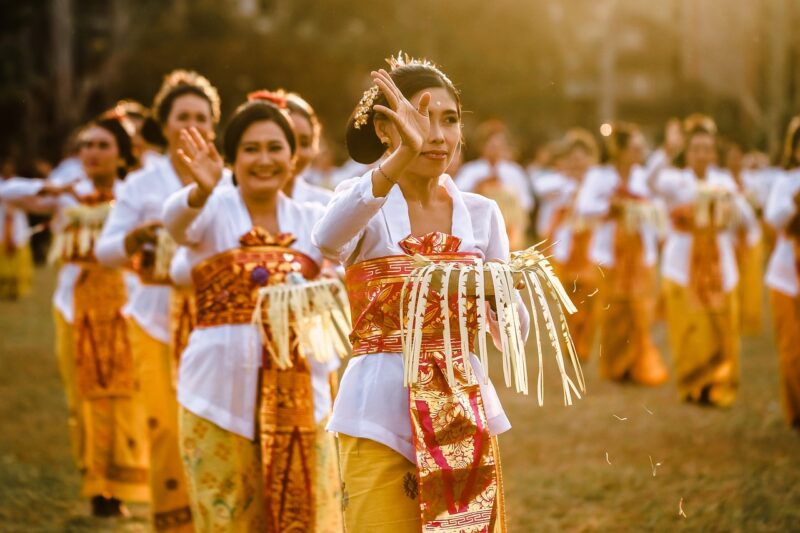Exploring the Styles and Significance of National Costumes Around the World
November 13, 2024

National costumes are a vibrant reflection of a country’s culture, history, and traditions. They offer a glimpse into the identity and heritage of a nation, providing insights into its customs and festivities. From the intricate designs of Japanese kimonos to the lively colors of the traditional Mexican sombrero, each costume tells a unique story. In this article, we will explore various national costumes from around the globe, diving into the styles, materials, and significance that make them so special.
1. The Importance of National Costumes
National costumes serve more than just aesthetic purposes; they embody the cultures and values of their respective countries. These garments:
- Symbolize Identity: A national costume is often worn during important celebrations and events, symbolizing pride in one’s heritage and identity.
- Preserve Traditions: They reflect traditional craftsmanship and techniques passed down through generations, helping to conserve cultural practices.
- Enhance Community Spirit: Wearing national costumes at festivals and public gatherings fosters a sense of belonging and community among citizens.
The impact of national costumes extends beyond aesthetics; they are a vital part of cultural heritage that unites people and celebrates diversity.
2. Traditional Costumes from Around the World
Let’s take an in-depth look at some notable national costumes that represent different cultures:
2.1. Japan: Kimono
The kimono is a traditional Japanese garment known for its intricate designs and elaborate styles. Made from silk and adorned with beautiful patterns, kimonos are characterized by their wrap-around design and wide sleeves.
– Significance: Kimonos are often worn during important ceremonies such as weddings and tea ceremonies, symbolizing purity and grace.
– Styles: Different styles of kimono exist based on the wearer’s age and occasion, including the formal furisode for young women and the more subdued nagajuban for older individuals.
2.2. Scotland: Kilt
The kilt is a knee-length skirt-like garment with pleats at the back, originating from Scotland. Traditionally made from woolen cloth, kilts are usually patterned with tartans, which are specific to Scottish clans.
– Significance: Worn during formal events and Highland games, kilts signify Scottish heritage and pride.
– Worn with: Kilts are typically paired with a sporran, a type of pouch worn on the front, and knee-length socks.
2.3. India: Sari
The sari is a versatile garment worn by women across India, consisting of a long fabric draped elegantly around the body. It comes in various fabrics, colors, and styles, reflecting the diversity of Indian culture.
– Significance: The sari symbolizes grace and femininity, often worn during festivals and family gatherings.
– Styles: Different regions have distinct sari styles; for example, the Banarasi sari from Varanasi is known for its gold thread work, while the Kanjeevaram sari from Tamil Nadu is made of silk and features vibrant colors.
2.4. Nigeria: Aso Ebi
Aso Ebi refers to a traditional Nigerian attire worn predominantly during weddings and special events. It is usually a matching fabric chosen by family or friends to signify solidarity.
– Significance: Wearing Aso Ebi is a way to show support for the celebrants and enhances social bonding within the community.
– Styles: The clothing includes the wrapper (a skirt) for women and the traditional agbada (a flowing robe) for men, often made of vibrant fabrics with intricate designs.
2.5. Mexico: Huipil
The Huipil is a traditional Mexican garment, typically worn by women of indigenous descent. Made from cotton or wool, it is decorated with vibrant embroidery that often symbolizes the wearer’s community and cultural identity.
– Significance: Huipils are worn in daily life and special occasions, connecting the wearer to their cultural roots.
– Styles: The style and design of a Huipil can vary significantly based on the region, with distinct patterns used to reflect community heritage.
3. The Role of National Costumes in Global Culture
National costumes play a crucial role in fostering cultural understanding and appreciation across different societies. When showcased during cultural festivals, parades, or international events, they serve as a medium for sharing cultural diversity.
Through initiatives like cultural exchanges and fashion shows, traditional outfits have entered mainstream fashion, influencing contemporary styles and promoting global awareness.
As globalization continues to shape our world, it’s essential that we respect and appreciate the significance of national costumes. They are not mere clothing but vital components of our global heritage that must be preserved and celebrated.
4. Preserving National Costumes: Challenges and Opportunities
In an ever-changing world, the preservation of national costumes faces various challenges:
- Modernization: As societies become more globalized, traditional garments are sometimes replaced by Western fashion, leading to the decline of national costumes.
- Cultural Appropriation: Misuse of traditional costumes in a non-cultural context can lead to a misunderstanding of their significance and meaning.
However, there are opportunities for revitalization:
- Cultural Festivals: Events celebrating local traditions encourage communities to wear their national costumes with pride, promoting awareness and appreciation among younger generations.
- Fashion Collaboration: Designers are reinterpreting traditional costumes, blending them with modern styles to create unique and appealing collections that resonate with new audiences.
Conclusion
National costumes are a rich tapestry of cultural expression that showcases the diversity of human creativity. They encapsulate history, identity, and tradition while also adapting to contemporary influences. As we explore and celebrate these garments, we foster a deeper understanding of the world around us. Recognizing their significance is crucial for preserving cultural heritage and promoting intercultural dialogue. Embracing the styles and stories of national costumes allows us to connect with one another and appreciate our global community on a deeper level.








